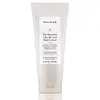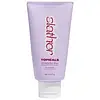What's inside
What's inside
 Key Ingredients
Key Ingredients

 Benefits
Benefits

 Concerns
Concerns

 Ingredients Side-by-side
Ingredients Side-by-side

Water
Skin ConditioningGlycolic Acid
BufferingC12-15 Alkyl Benzoate
AntimicrobialCetearyl Alcohol
EmollientIsopropyl Palmitate
EmollientSodium Hydroxide
BufferingOlus Oil
EmollientButyrospermum Parkii Butter
Skin ConditioningGlycerin
HumectantDimethicone
EmollientGlyceryl Stearate
EmollientC13-15 Alkane
SolventMagnesium Aluminum Silicate
AbsorbentPotassium Cetyl Phosphate
EmulsifyingHippophae Rhamnoides Fruit/Seed Oil
AntimicrobialCandelilla Cera
EmollientAllantoin
Skin ConditioningXanthan Gum
EmulsifyingHydrogenated Vegetable Oil
EmollientXylitylglucoside
HumectantAnhydroxylitol
HumectantXylitol
HumectantTetrasodium Glutamate Diacetate
Ethylhexylglycerin
Skin ConditioningPhenoxyethanol
PreservativeWater, Glycolic Acid, C12-15 Alkyl Benzoate, Cetearyl Alcohol, Isopropyl Palmitate, Sodium Hydroxide, Olus Oil, Butyrospermum Parkii Butter, Glycerin, Dimethicone, Glyceryl Stearate, C13-15 Alkane, Magnesium Aluminum Silicate, Potassium Cetyl Phosphate, Hippophae Rhamnoides Fruit/Seed Oil, Candelilla Cera, Allantoin, Xanthan Gum, Hydrogenated Vegetable Oil, Xylitylglucoside, Anhydroxylitol, Xylitol, Tetrasodium Glutamate Diacetate, Ethylhexylglycerin, Phenoxyethanol
Water
Skin ConditioningDiethylhexyl Succinate
EmollientC12-15 Alkyl Benzoate
AntimicrobialGlycolic Acid
BufferingCetearyl Alcohol
EmollientPotassium Hydroxide
BufferingGlyceryl Stearate
EmollientPEG-100 Stearate
Retinol
Skin ConditioningLactic Acid
BufferingUrea
BufferingSqualane
EmollientGlycerin
HumectantPhospholipids
Skin ConditioningUbiquinone
AntioxidantCamellia Sinensis Leaf Extract
AntimicrobialTocopheryl Acetate
AntioxidantC13-14 Isoparaffin
EmollientCaprylic/Capric Triglyceride
MaskingPolyacrylamide
Laureth-7
EmulsifyingCetearyl Glucoside
EmulsifyingXanthan Gum
EmulsifyingPotassium Sorbate
PreservativeSodium Benzoate
MaskingPhenoxyethanol
PreservativeDisodium EDTA
Water, Diethylhexyl Succinate, C12-15 Alkyl Benzoate, Glycolic Acid, Cetearyl Alcohol, Potassium Hydroxide, Glyceryl Stearate, PEG-100 Stearate, Retinol, Lactic Acid, Urea, Squalane, Glycerin, Phospholipids, Ubiquinone, Camellia Sinensis Leaf Extract, Tocopheryl Acetate, C13-14 Isoparaffin, Caprylic/Capric Triglyceride, Polyacrylamide, Laureth-7, Cetearyl Glucoside, Xanthan Gum, Potassium Sorbate, Sodium Benzoate, Phenoxyethanol, Disodium EDTA
 Reviews
Reviews

Ingredients Explained
These ingredients are found in both products.
Ingredients higher up in an ingredient list are typically present in a larger amount.
C12-15 Alkyl Benzoate is made up of Benzoic Acid and long chain alcohols. It has a low molecular weight.
C12-15 Alkyl Benzoate is an emollient and texture enhancer. Due to its solubility, it is often used in sunscreens to help evenly distribute active ingredients.
As an emollient, C12-15 Alkyl Benzoate helps soften and hydrate your skin. Emollients create a film on your skin that traps moisture within.
This ingredient has been reported to cause eye irritation.
Learn more about C12-15 Alkyl BenzoateCetearyl alcohol is a mixture of two fatty alcohols: cetyl alcohol and stearyl alcohol. It is mainly used as an emulsifier. Emulsifiers help prevent the separation of oils and products. Due to its composition, it can also be used to thicken a product or help create foam.
Cetearyl alcohol is an emollient. Emollients help soothe and hydrate the skin by trapping moisture.
Studies show Cetearyl alcohol is non-toxic and non-irritating. The FDA allows products labeled "alcohol-free" to have fatty alcohols.
This ingredient is usually derived from plant oils such as palm, vegetable, or coconut oils. There is debate on whether this ingredient will cause acne.
Due to the fatty acid base, this ingredient may not be Malassezia folliculitis safe.
Learn more about Cetearyl AlcoholGlycerin is already naturally found in your skin. It helps moisturize and protect your skin.
A study from 2016 found glycerin to be more effective as a humectant than AHAs and hyaluronic acid.
As a humectant, it helps the skin stay hydrated by pulling moisture to your skin. The low molecular weight of glycerin allows it to pull moisture into the deeper layers of your skin.
Hydrated skin improves your skin barrier; Your skin barrier helps protect against irritants and bacteria.
Glycerin has also been found to have antimicrobial and antiviral properties. Due to these properties, glycerin is often used in wound and burn treatments.
In cosmetics, glycerin is usually derived from plants such as soybean or palm. However, it can also be sourced from animals, such as tallow or animal fat.
This ingredient is organic, colorless, odorless, and non-toxic.
Glycerin is the name for this ingredient in American English. British English uses Glycerol/Glycerine.
Learn more about GlycerinGlyceryl Stearate is a mix of glycerin and stearic acid.
It is used to stabilize the mixing of water and oil ingredients. By preventing these ingredients from separating, it can help elongate shelf life. It can also help thicken the product's texture.
As an emollient, it helps soften skin and supports barrier-replenishing ingredients.
In cosmetics, Glyceryl Stearate is often made from vegetable oils or synthetically produced.
This ingredient may not be fungal-acne safe
Fun fact: The human body also creates Glyceryl Stearate naturally.
Learn more about Glyceryl StearateGlycolic Acid is arguably the most famous alpha hydroxy acid (AHA) with tons of research backing its benefits.
It is found naturally in sugar cane but the form used in skincare is usually synthetic for purity and stability.
Glycolic acid removes the top layer of dead skin cells to allow newer and fresher ones to emerge.
AHAs work by breaking down the structural “glue” that holds old skin cells in place. When that buildup is gone, your skin can renew itself more efficiently.
Research also shows glycolic acid stimulates collagen production, helping to firm and thicken the skin over time. This is one of its biggest advantages over other AHAs.
Overall, glycolic acid helps with:
Fun fact: Glycolic acid boosts skin hydration by helping it produce molecules that increase hyaluronic acid naturally.
To work best, glycolic acid products should have a pH between 3-4 (that’s where exfoliation is most effective but still gentle on skin).
The pH and concentration of a product are key to its effectiveness:
It is normal to feel a slight stinging sensation when using glycolic acid. This usually fades as your skin adjusts.
Because glycolic acid has the smallest molecular size in the AHA family, it can penetrate deeper, which enhances its effectiveness but also makes it more likely to irritate sensitive skin.
If your skin is very sensitive or prone to rosacea, glycolic acid may be too strong; in that case, try milder options like lactic acid or a PHA instead.
Recent studies suggest glycolic acid might even help protect against UV damage. But don’t skip sunscreen! Freshly exfoliated skin is more sensitive to the sun.
Glycolic acid is a skincare superstar. It smooths, brightens, hydrates, and firms the skin. Unless you’re highly sensitive, it’s well worth adding to your routine.
Read more about some other popular AHA's here:
Learn more about Glycolic AcidPhenoxyethanol is a preservative that has germicide, antimicrobial, and aromatic properties. Studies show that phenoxyethanol can prevent microbial growth. By itself, it has a scent that is similar to that of a rose.
It's often used in formulations along with Caprylyl Glycol to preserve the shelf life of products.
Water. It's the most common cosmetic ingredient of all. You'll usually see it at the top of ingredient lists, meaning that it makes up the largest part of the product.
So why is it so popular? Water most often acts as a solvent - this means that it helps dissolve other ingredients into the formulation.
You'll also recognize water as that liquid we all need to stay alive. If you see this, drink a glass of water. Stay hydrated!
Learn more about WaterXanthan gum is used as a stabilizer and thickener within cosmetic products. It helps give products a sticky, thick feeling - preventing them from being too runny.
On the technical side of things, xanthan gum is a polysaccharide - a combination consisting of multiple sugar molecules bonded together.
Xanthan gum is a pretty common and great ingredient. It is a natural, non-toxic, non-irritating ingredient that is also commonly used in food products.
Learn more about Xanthan Gum